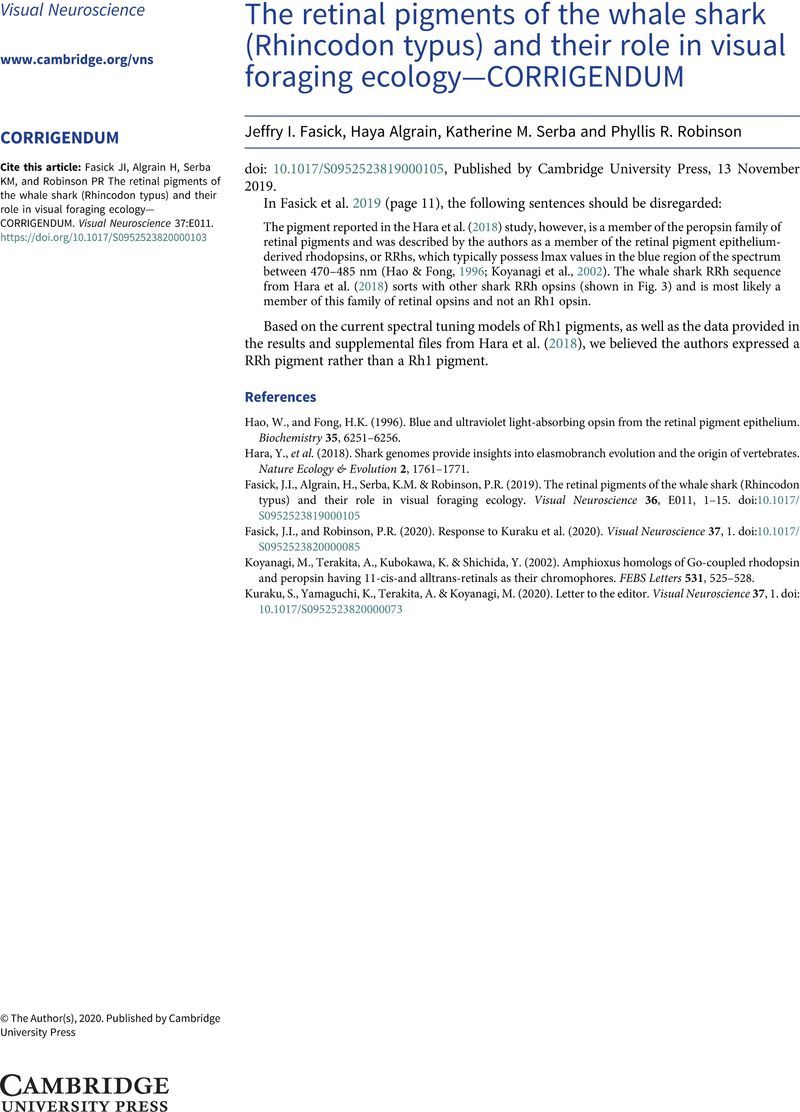Crossref Citations
This article has been cited by the following publications. This list is generated based on data provided by Crossref.
Yamaguchi, Kazuaki
Koyanagi, Mitsumasa
and
Kuraku, Shigehiro
2021.
Visual and nonvisual opsin genes of sharks and other nonosteichthyan vertebrates: Genomic exploration of underwater photoreception.
Journal of Evolutionary Biology,
Vol. 34,
Issue. 6,
p.
968.



